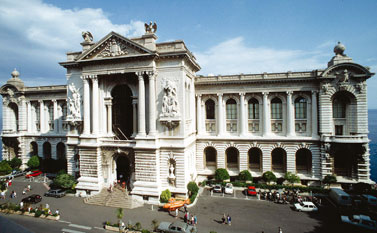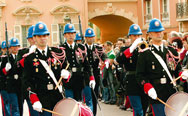- Villa search

- Canaries
- Caribbean
- Croatia, Bulgaria and Hungary
- Cyprus
- Florida
- France and Corsica
- Greece
- Italy
- Lakes and Mountains
- Madeira
- Malta and Gozo
- Portugal
- South Africa
- Spain - Balearics
Information

The Oceanographic Museum
'The heart of modern Monaco is the quayside district of La Condamine, where you can ooh and ah at the battlecruiser-sized floating gin palaces of the rich and famous'
The must-sees include the Musée Oceanographique, founded by Prince Albert 1 in 1910, with its cool and cavernous interior and tanks that glisten with denizens of the deep, from sharks and rays to bizarrely camouflaged miniature sea-dragons. It also has a very amiable terrace restaurant – cheap by the principality’s normal standards – with world-class views of the coast.
Le Rocher has other attractions, but the Monte Carlo Story (opposite the Musée Oceanographique) is a waste of time and money, and the Musée de Cire, with its stiff tableaux in wax of moments in Monaco's history, is not much more entertaining.
Instead, head for the delightful Musée de la Chapelle de la Visitation (on Place de la Visitation), a baroque chapel which houses a fine private art collection.

Changing of the guard
After that, if you can’t be bothered to walk all the way down to sea level, hop on the Azur Express road train (departures from the Musée Oceanographique 10.30-18.00 in the summer, 11.00-17.00 in the winter, closed mid-November to the end of January) which will transfer you with a multilingual commentary to the lower town, past the principality's other favourite sites, including the cathedral and the modest tomb of Princess Grace, the Hollywood star who married Prince Rainier in 1956 and died in a car crash in 1982.
The heart of modern Monaco is the quayside district of La Condamine, where you can ooh and ah at the battlecruiser-sized floating gin palaces of the rich and famous, then take a wander through the terraced gardens of the Parc Fontvielle and its collection of public art, the Chemin des Sculptures.

Monaco Cathedral
If that’s too modern for you, visit the Centre Commercial de Fontvielle where you’ll find three of Monaco’s more retro museums. The princely Collection des Voitures Anciennes is a place of pilgrimage for petrolheads, with pride of place going to the 1929 Bugatti which won Monaco’s first Grand Prix, and there are more than 100 other classics in Prince Rainier’s personal collection. His collection of beautifully detailed model ships is housed in the Musée Naval, while his collection of stamps and coins is on show in the Musée des Timbres et des Monnaie.
The famous Casino de Monte Carlo opens at noon for those who fancy risking their life savings – or who want just a peek at its opulent Salle Europe, where the roulette wheels whirr beneath eight huge crystal chandeliers. Take your passports, because Monaco’s citizens aren’t allowed to gamble there. It could be that they know something we don’t.

The Formula 1 Grand Prix is held on the city streets
Getting there
- By train from Nice – about 20 minutes
- Bus or taxi from Nice – approximately 45 minutes
- Helicopter from Nice-Côte d’Azur Airport – seven minutes.
home | destinations and editorial | villa search | property for sale | car hire | flights | services
villaseek blog | contact villaseek | links and resources | advertise your villa© Dune Root Ltd and Villaseek.com 2012 - Caribbean
- Canaries